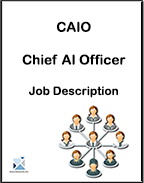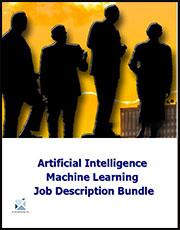Top 10 Best Practices for AI Deployment
AI experience counts and is key to successful deployment
AI is now on the radar of executive and operational management. CIOs now have that as one of their top priorities.

We have looked at several successful and unsuccessful AI implementations and have identified ten best practices that have worked.
- Set a baseline measurement - Start AI projects with current KPIs that are well understood. This goes against a development instincts to start fixing things, but when you measure the baseline you will know whether you are fixing things.
- Broadcast both successes and failures - Communication is the first step in acceptance of a new way of doing things. Executive and operational management needs to be on board and the more they know the easier it will be to get them to support the efforts.
- Prototype - Before a major commitment is made to an AI solution, start small. Identify measurable KPIs and use them to calculate the value and opportunities that the AI solutions can offer.
- Implement AI in stages - Plan the development and implementation in a way that results can be seen quickly. This helps in getting both operational and executive management approval. In addition, it provides a path for the AI solution to be adjusted to achieve the greatest buy-in from all the participants.
- One thing at a time - Do not be so focused on efficiency that you reduce the number of feedback cycles in an attempt to get the initially defined AI solution deployed without seeing a more evolved solution. This can lead to more starts and stops in the process where the expected value of the AI solution is greater than the cycle overhead avoided.
- Wide-spread implementations require care - Before an AI solution is spread across the operations of a company all the major features and functions of the solution need to be accepted, working as anticipated, and easily modifiable as new extensions are understood by those affected.
- Evolve the AI solution - It is difficult to see what the total impact of an AI solution is. Study the operational impacts, review the KPIs, and adapt to get the best ROI possible.
- Implement the easiest evolutions first - When faced with a change, first make it easy, then make the easy change. (e.g. prototype and implement AI evolution in stages) Do not be afraid to say the value of the evaluation may not be right for your enterprise.
- Focus evolution with multiple related changes at the same time - If you need to change several elements in the same operational area, first rearrange the AI changes so the change only needs to happen in one operational area.
- Isolate the AI evolution - If you only need to change a part of an AI element, extract that part so the whole impact can be understood before the full implementation occurs.
Read On Order IT Infrastructure Kit Download Selected Pages




